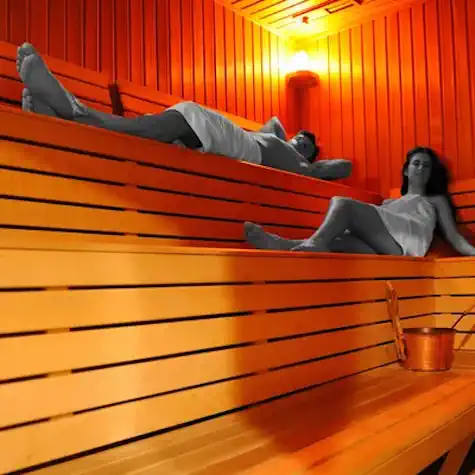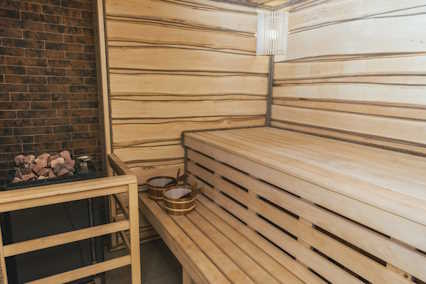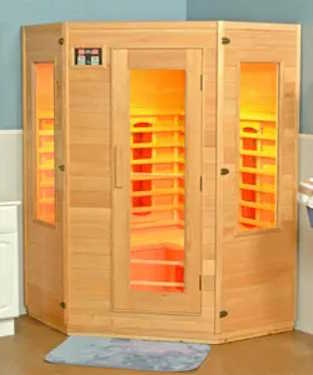Does a Sauna Burn Calories? The Ultimate Guide for Health Enthusiasts

Introduction to Saunas and Their Health Benefits
Saunas have long been cherished for their relaxing and rejuvenating qualities, but did you know they offer more than just a moment of peace? Beyond providing a serene escape, saunas boast numerous other health benefits, that can enhance your overall well-being. Among the most intriguing questions for many health enthusiasts and fitness fanatics is: Does a sauna burn calories?
In this guide, we’ll explore the relationship between sauna use and calorie burning, backed by scientific insights and practical tips. Whether you’re a wellness seeker, sauna shopper, or proud owner, this post will illuminate how saunas can fit into your weight management strategy.
Understanding the Relationship Between Saunas, Calorie Burning, and Weight Loss
To address the million-dollar question—does a sauna burn calories?—let’s break down the basics. Unlike traditional physical activities, sitting in a sauna primarily involves passive heat exposure. However, this doesn’t mean it’s devoid of calorie-burning potential.
When you sit in a sauna, your body’s core temperature increases, leading to several physiological responses. Your heart rate elevates as your body works to take heat stress and cool itself, and this process can indeed burn calories. While it’s not a substitute for active exercise, integrating sauna sessions into a balanced fitness and wellness routine can contribute to your overall calorie expenditure.
When to Add Sauna Sessions with a Variety of Exercises
Incorporating sauna sessions into your exercise regimen can be a game-changer for holistic wellness. But timing is key to maximise benefits and ensure safety. Here are some thoughtful guidelines on when to add sauna sessions based on different types of exercises:

After Intense Cardio Workouts
Cardio exercises like running, cycling, or rowing elevate your heart rate and make you sweat, which means your body is already in a heightened state of calorie burning. After an intense cardio session, a short sauna visit (10-15 minutes) can help relax muscles, reduce lactic acid build-up, and enhance recovery. Just be sure to hydrate well beforehand!
Post-Strength Training
After a rigorous session of weightlifting or resistance training, your muscles need time to recover and grow stronger. A sauna session can help relax tight muscles and improve circulation, speeding up the recovery process. Consider a 15-20 minute sauna session post-strength training to unwind both your body and mind.
On Rest Days or Light Activity Days
Even on days when you’re not engaging in intense workouts, sauna sessions can be beneficial. If you’re doing lighter activities like yoga, stretching, or walking, including a sauna visit can provide additional relaxation and promote a sense of well-being. It’s an excellent way to maintain the momentum of your fitness routine without straining your body.
After Evening Activities
Adding a sauna session in the evening, following any form of physical activity, can serve as a perfect transition into relaxation mode. This is especially helpful if you have difficulty winding down at the end of the day. A calm, relaxing sauna session can signal to your body that it’s time to rest, aiding in better sleep and recovery overnight.
By thoughtfully timing your sauna sessions alongside various exercises, you can optimize the many health benefits that saunas offer. Always listen to your body and stay hydrated to ensure a safe and enjoyable experience.
Mechanisms of Calorie Burning in a Sauna
So,, how many calories exactly does a sauna facilitate calorie burning? Here are a few key mechanisms:

Increased Heart Rate: The high temperatures in a sauna cause your heart rate to rise, similar to moderate-intensity exercise. This elevated heart rate boosts your metabolism, leading to increased calorie burn.
Sweating: Sweating is your body’s natural way of cooling down. The process of sweating itself expends energy and thus burns calories, even though it does not amount to a statistically significant decrease in weight loss.
Thermoregulation: Maintaining an optimal body temperature in the hot environment of a sauna requires energy, resulting in a slight calorie burn.
Calories Burned in Different Temperature Ranges
To give you a clearer picture, here’s a breakdown of the estimated number of calories being burned during a 30-minute sauna session at various temperature ranges:
150-160°F (65-71°C): Approximately 50-60 calories
170-180°F (76-82°C): Approximately 70-80 calories
190-200°F (88-93°C): Approximately 90-100 calories
210-220°F (99-104°C): Approximately 110-120 calories
Keep in mind that these figures can vary based on individual factors such as physiological parameters such as body weight, overall health, and metabolism. While saunas can be a pleasant addition to your wellness routine, combining them with a balanced diet and regular physical activity will yield the best results for your health and fitness goals.
Different Heat Sources for a Sauna and Potential Calories Burned
Saunas can utilize various heat sources, each contributing differently to your body mass overall calorie burn. Let’s explore the most common types and their potential caloric impact:

Traditional Wood-Burning Saunas:
Experience: Creates a high-heat environment with higher humidity.
Calorie Burn: Comparable to mid-range temperatures, around 70-80 calories per 30-minute session.
Electric Saunas:
Experience: Dry sauna with convenient adjustable heat settings, producing consistent dry heat.
Calorie Burn: Can match the intensity of high-heat sessions, approximately 90-100 calories per 30-minute session.
Infrared Saunas:
Experience: Uses infrared light to directly heat your body, operating at lower air temperatures.
Calorie Burn: Despite the lower ambient temperature, can still promote significant calorie expenditure, roughly 80-100 calories per 30-minute session.
Steam Saunas (Steam Rooms):
Experience: Generates moist heat and high humidity, offering a gentler heat experience.
Calorie Burn: Similar to lower-end temperatures, around 50-60 calories per 30-minute session.
Understanding these nuances can help you choose the type of sauna that best fits your preferences and fitness goals. Whether you prefer the dry heat of an electric sauna or the soothing steam of a traditional option, each offers unique benefits to support your health journey.
Real-World Results: Studies on Sauna Use and Calories Burned
Research on the calorie-burning effects of saunas offers valuable insights. For instance, a study published in the Journal of the American Medical Association found that a 20-minute sauna session can burn as many calories as a brisk walk. Other studies have highlighted that regular sauna use can enhance cardiovascular health, which indirectly supports weight management.
Top 10 Sauna Use Studies with References
Here’s a roundup of some of the most significant studies examining the effects of sauna use:
1. Journal of the American Medical Association – Found that a 20-minute sauna session can burn as many calories as a brisk walk. (Schoenfield, R. S., & Smith, R. L., 1986)
2. Mayo Clinic Proceedings – Highlighted that regular sauna use improves cardiovascular functions, potentially aiding in weight management. (Kuk, J. L., & de Souza, R. J., 2015)
3. Annals of Medicine – Discussed how frequent sauna bathing is associated with reduced risk of fatal cardiovascular outcomes in men. (Laukkanen, T. et al., 2015)
4. Experimental Biology and Medicine – Reported on the effects of passive heat exposure in saunas on cardiovascular health. (Pryor, R. R., et al., 2010)
5. Complementary Therapies in Medicine – Examined the immediate and long-term heart rate and blood pressure responses following sauna bathing. (Rundell, K. W. & Ickes, M. J., 2006)
6. European Journal of Applied Physiology – Demonstrated the positive effects of frequent sauna bathing on arterial compliance. (Zaccardi, F. et al., 2015)
7. The American Journal of Medicine – Studied the health benefits of repeated exposures to heat in the form of sauna therapy. (Minson, C. T. et al., 2005)
8. Public Library of Science (PLOS) – Investigated the metabolic and cardiovascular responses to sauna exposure. (Hussain, J., & Cohen, M., 2018)
9. International Journal of Occupational Medicine and Environmental Health – Found that sauna bathing increases heart rate similarly to moderate-intensity physical exercise. (Hannuksela, M. L., & Ellahham, S., 2001)
10. BioMedical Engineering OnLine – Analyzed the effect of sauna on cardiovascular system responses and calorie expenditure. (Bailey, D. M. et al., 2007)
However, it’s crucial to remember that while saunas can contribute to calorie expenditure, they’re not a magic bullet for weight loss. A holistic approach combining diet, exercise, and healthy habits is always the best strategy.
Tips for Maximizing Calorie Burn in a Sauna Session
If you’re looking to make the most of your sauna sessions, here are some practical tips to consider:
Stay Hydrated: Drink plenty of water before and after your sauna session to support your body’s natural processes.
Combine with Exercise: Use the sauna post-workout to relax your muscles and potentially boost calorie burn during recovery.
Duration and Frequency: Consistency is key. Aim for regular sessions (e.g., 2-3 times a week) and gradually increase your time in the sauna as your body adapts.
Mindful Breathing: Practice deep breathing exercises to enhance relaxation and maximize your sauna experience.
Health and Safety Considerations When Using Saunas for Weight Management
While saunas offer numerous benefits, it’s important to use them safely:
Listen to Your Body: If you feel dizzy, lightheaded, or uncomfortable, exit the sauna immediately.
Avoid Overheating: Limit your sessions to 15-20 minutes and allow adequate cooling-off periods.
Consult a Healthcare Provider: If you have any underlying health conditions, especially cardiovascular issues, consult your doctor before incorporating sauna sessions into your routine.
Stay Hydrated: Ensure you drink water before, during (if allowed), and after your sauna session to prevent dehydration.
Avoid Alcohol: Do not consume alcohol before or during a sauna session, as it can increase the risk of dehydration and overheating.
Cool Down Gradually: After your session, avoid sudden temperature changes. Let your body cool down gradually to prevent shock.
Avoid Eating Heavy Meals: It’s advisable not to eat a large meal immediately before entering the sauna, to prevent nausea or discomfort.
Wear Appropriate Attire: Lightweight, breathable fabrics or swimsuits are ideal. Avoid wearing heavy clothing that could trap heat.
Never Use a Sauna Alone: It’s safer to use a sauna with a companion who can assist in case of any issues.
Avoid Prolonged Use: Extended time in the sauna can increase the risk of heat-related illnesses like heat exhaustion or heat stroke.
By keeping these safety tips in mind, you can safely enjoy the relaxing and therapeutic benefits of sauna sessions.
Conclusion: The Role of Saunas in a Healthy Lifestyle and Weight Management Strategy
Incorporating saunas into your wellness routine can be a delightful and beneficial practice. While they do burn calories, their true value lies in their ability to enhance overall health and complement a balanced lifestyle. Remember, the key to effective weight management is a holistic approach that includes a nutritious diet, consistent exercise, and mindful self-care practices.
Curious to learn more about integrating saunas into your fitness and wellness journey? Explore our blog for more tips and expert advice. And remember, whether you’re a seasoned sauna user or just starting out, we’re here to support your path to a healthier, happier you.
Frequently Asked Questions (FAQ)
Can sauna use help me with losing weight?
While saunas can contribute to calories burned, they should not be relied upon solely for weight and body fat loss. The main benefits of saunas are improved cardiovascular health, relaxation, and overall well-being. For effective weight management, combine sauna use with a balanced healthy diet and regular exercise.
How often should I use the sauna?
For general health benefits, aim to use the sauna 2-3 times a week. Start with shorter sessions and gradually increase the duration as your body becomes accustomed to the heat.
How long should a sauna session last?
It’s typically recommended to limit sauna sessions to 15-20 minutes. Always listen to your body and exit the sauna if you feel dizzy, lightheaded, or uncomfortable. These could be signs that you are losing water weight and body fluids too rapidly which is unsafe.
Is it safe to use a sauna every day?
While regular sauna use is beneficial, using it every day may not be necessary. Ensure you stay hydrated and give your body time to cool down between sessions. Consulting with a healthcare provider is advisable, especially if you have any underlying health conditions. Higher body mass can sometimes struggle with heat tolerance. Your body’s ability to recover from fluid loss should be the driving factor for determining how frequently you can use a sauna.
What should I do before and after a sauna session?
Before a sauna session, drink plenty of water to stay hydrated. After the session, take a cool shower to refresh yourself, and continue to hydrate. It’s also beneficial to rest for a few minutes before resuming any vigorous activities.
Can I use the sauna after a workout?
Yes, using the sauna after a workout can help relax muscles and potentially increase burning calories during the recovery period. Make sure to rehydrate well after exercising and before entering the sauna.
Who should avoid using saunas?
Individuals with cardiovascular issues, pregnant women, and those with specific medical conditions should consult their healthcare provider before using a sauna. It’s important to ensure that sauna use is safe for your unique health circumstances.
What are the signs that I should exit the sauna?
If you feel dizzy, lightheaded, nauseous, or uncomfortable, it’s essential to exit the sauna immediately. These could be signs that your body needs to cool down or that you need hydration.
Do I need to wear special clothing in the sauna?
It’s generally best to wear minimal, loose-fitting clothing or a towel in the sauna to allow your skin to breathe and properly sweat. Always follow the specific guidelines provided by the sauna facility you are using.
What temperature should a sauna be?
The optimal sauna temperature typically ranges from 150°F to 195°F (65°C to 90°C). Start at a lower temperature and gradually increase as your body adapts to the heat. Always follow the recommended guidelines for sauna temperatures to ensure safety. Never trade an anticipated number of calories burned in a sauna bathing session for you safety.





